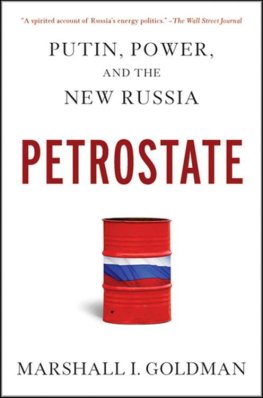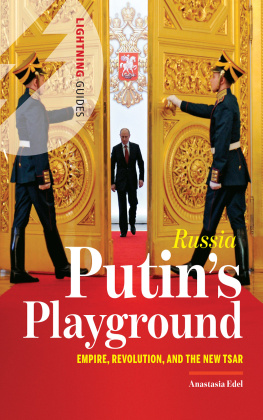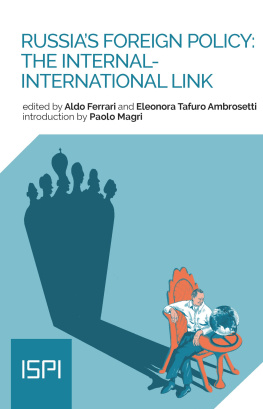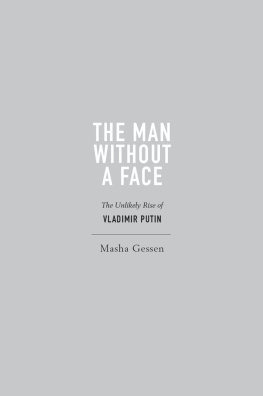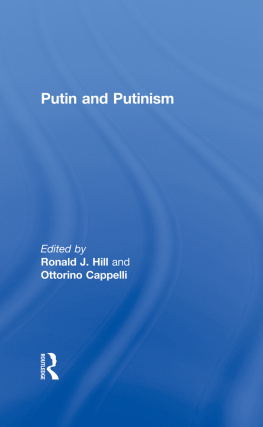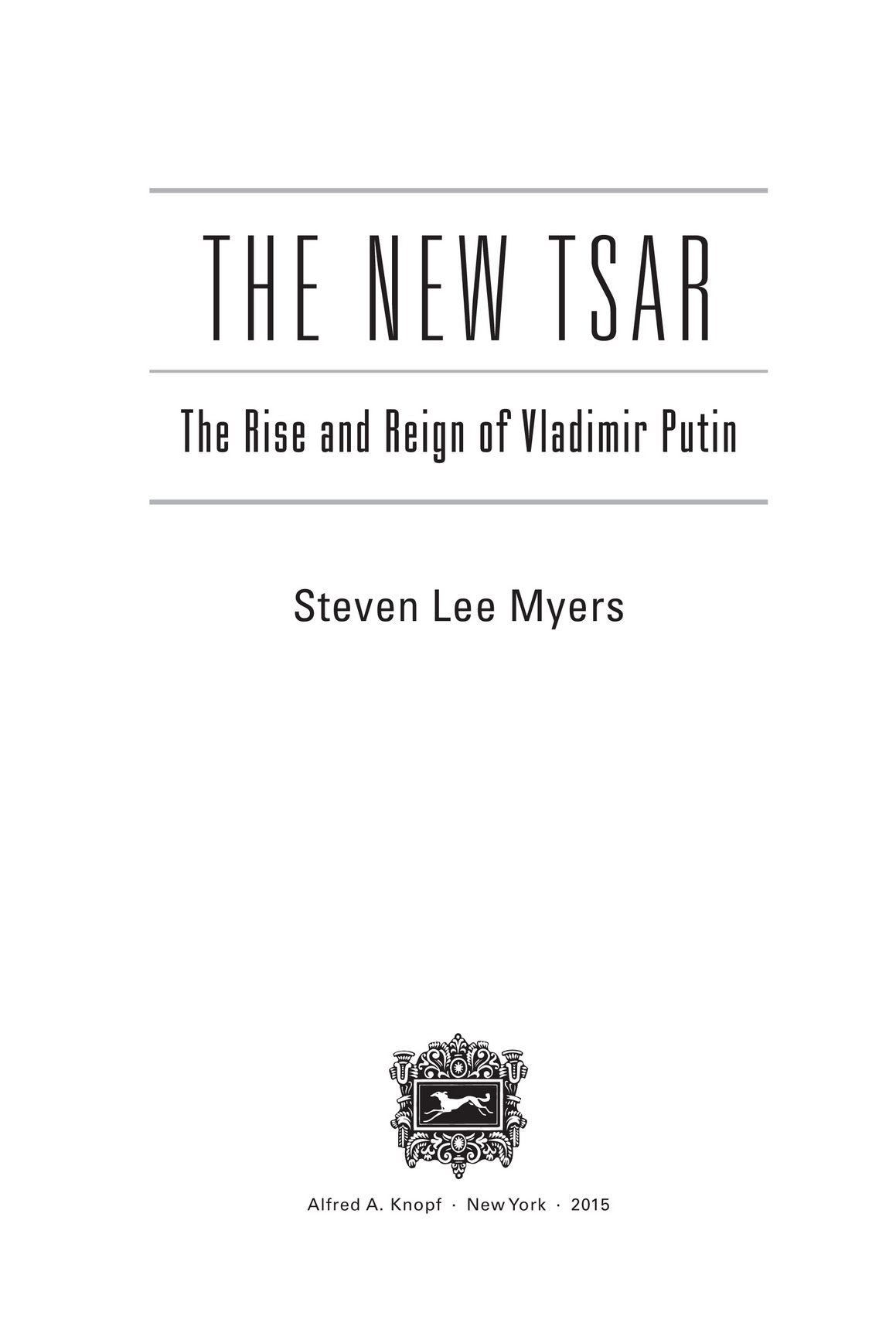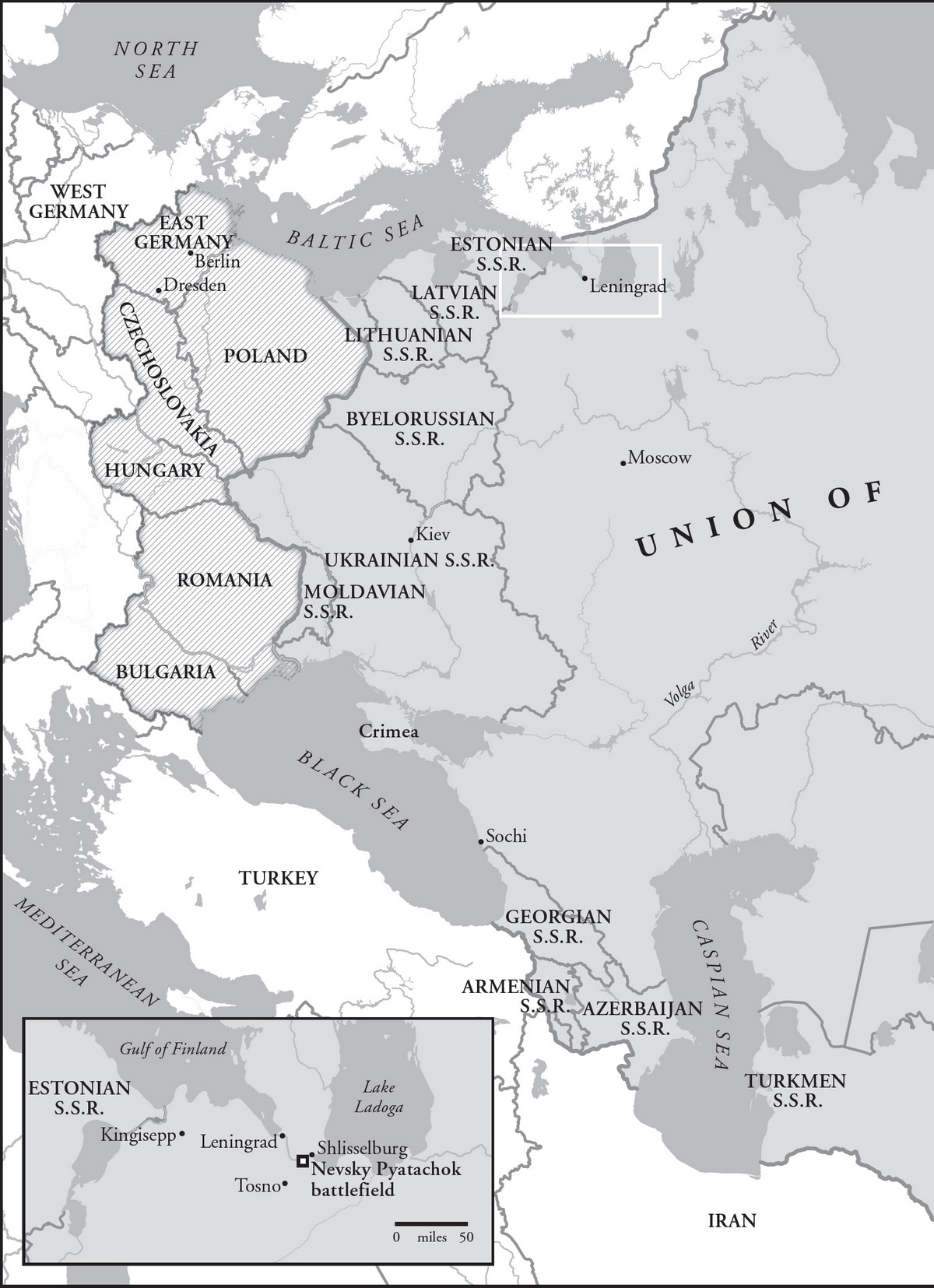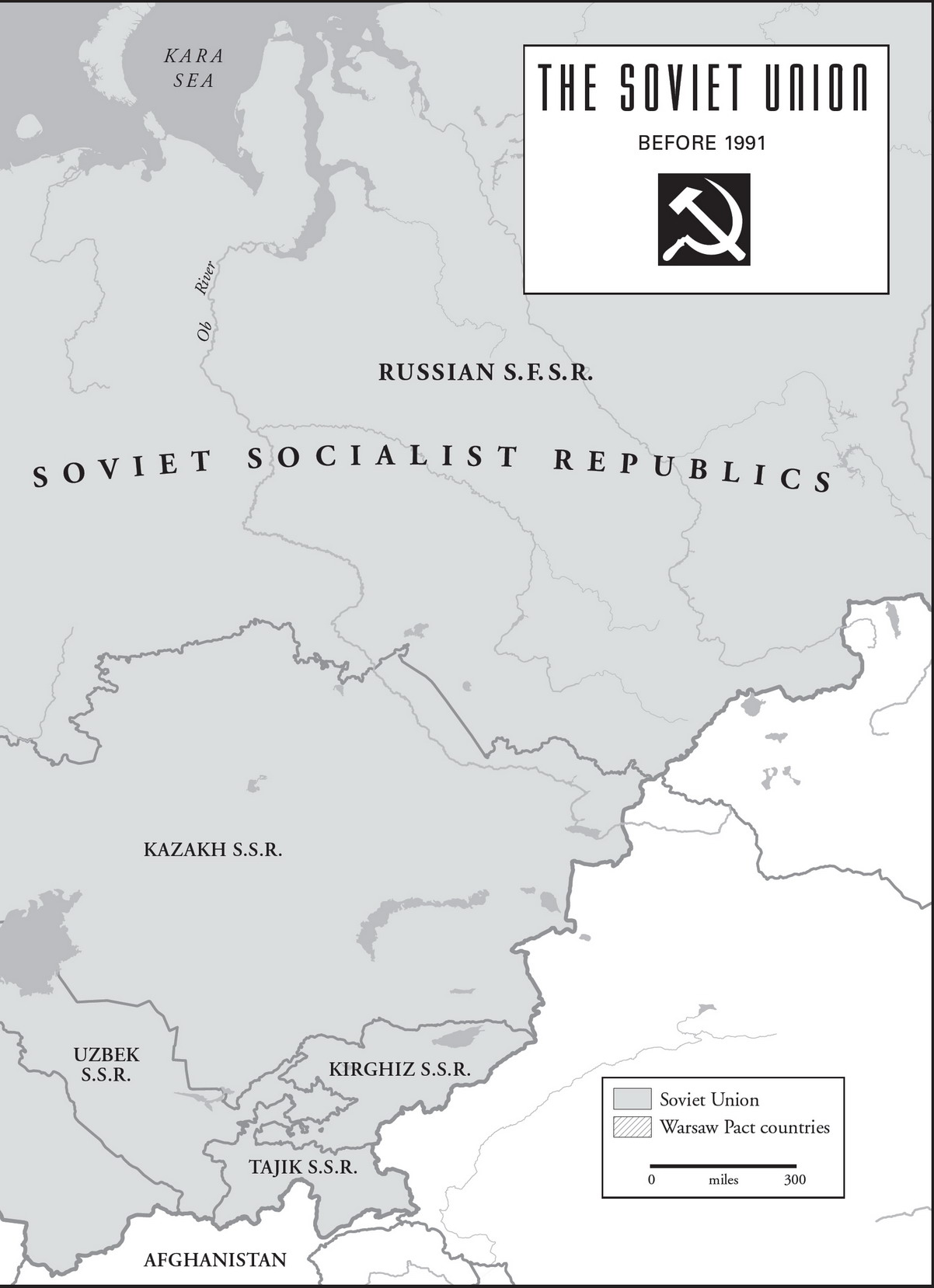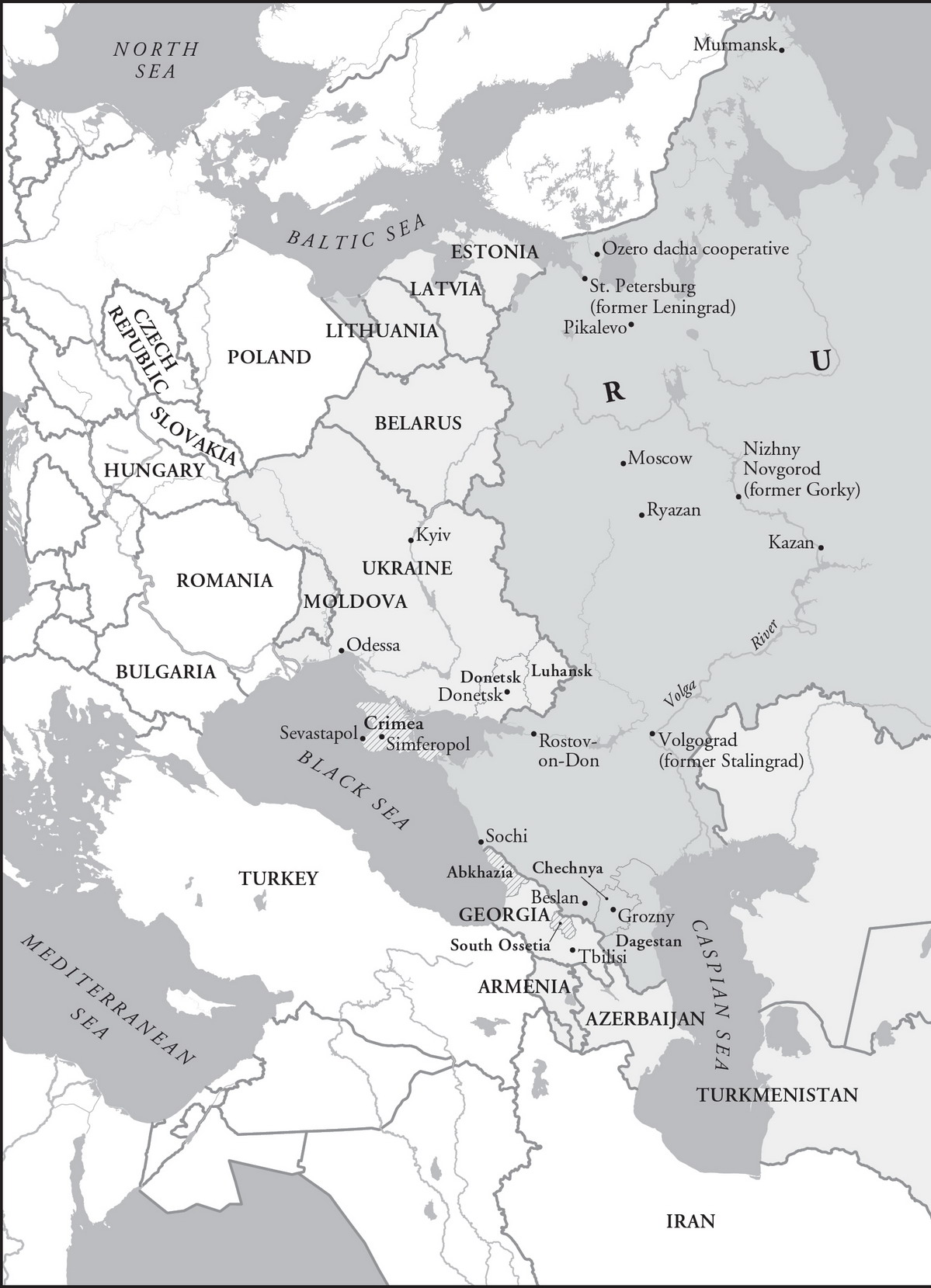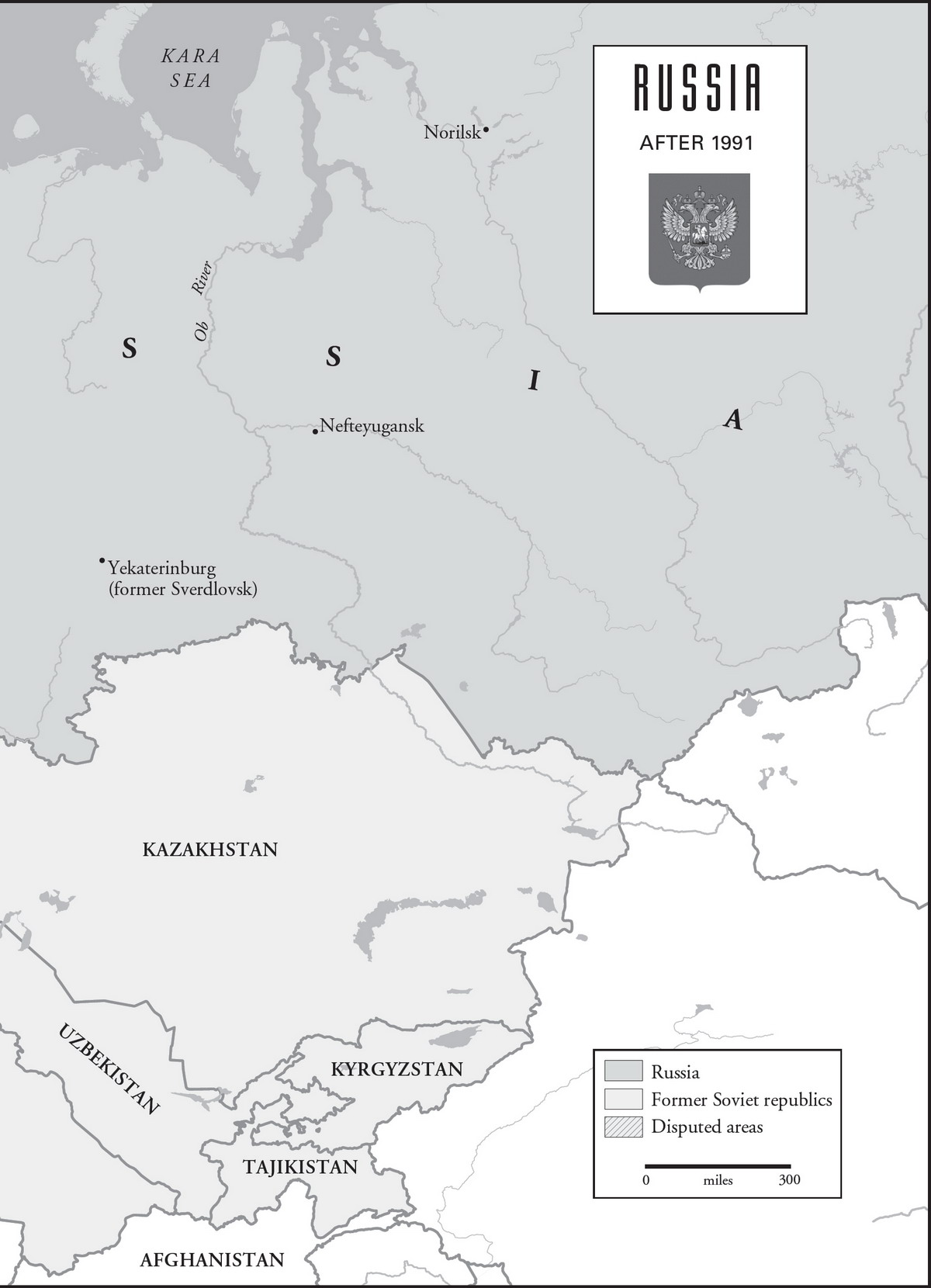Contents
THIS IS A BORZOI BOOK
PUBLISHED BY ALFRED A. KNOPF
Copyright 2015 by Steven Lee Myers
All rights reserved. Published in the United States by Alfred A. Knopf, a division of Penguin Random House LLC, New York, and distributed in Canada by Random House of Canada, a division of Penguin Random House Ltd., Toronto.
www.aaknopf.com
Knopf, Borzoi Books, and the colophon are registered trademarks of Penguin Random House LLC.
Grateful acknowledgment is made to PublicAffairs, a member of the Perseus Books Group, for permission to reprint excerpts from First Person: An Astonishingly Frank Self-Portrait by Russias President by Vladimir Putin, et al., copyright 2000 by Nataliya Gevorkyan, Natalya Timakova, and Andrei Kolesnikov; and Midnight Diaries by Boris Nikolayevich Yeltsin, copyright 2000 by Boris Yeltsin. Reproduced with permission of PublicAffairs via Copyright Clearance Center.
Library of Congress Cataloging-in-Publication Data
Myers, Steven Lee.
The new tsar : the rise and reign of Vladimir Putin / Steven Lee Myers.
First American edition.
pages cm
A Borzoi bookTitle page verso.
Includes bibliographical references.
ISBN 978-0-307-96161-7 (hardcover) ISBN 978-0-307-96162-4 (eBook)
1. Putin, Vladimir Vladimirovich, 1952 2. Putin, Vladimir Vladimirovich, 1952Political and social views. 3. PresidentsRussia (Federation)Biography. 4. Soviet Union. Komitet gosudarstvennoi bezopasnostiBiography. 5. Political leadershipRussia (Federation) 6. Power (Social sciences)Russia (Federation) 7. Russia (Federation)Politics and government1991 I. Title.
DK510.766.P87M932015
947.0862092dc23
[B]2015010720
eBook ISBN9780307961624
Cover photograph by Platon / Trunk Archive
Cover design by Peter Mendelsund
Maps by Mapping Specialists, Ltd.
v4.1_r1
a
For Margaret, Emma, and Madeline
And in memory of my mother, Nita Louise Myers
Oh, he understood very well that for the meek soul of a simple Russian, exhausted by grief and hardship and, above all, by constant injustice and sin, his own or the worlds, there was no stronger need than to find a holy shrine or a saint to prostrate himself before and to worship.
Fyodor Dostoevsky,
The Brothers Karamazov
Contents
PART ONE
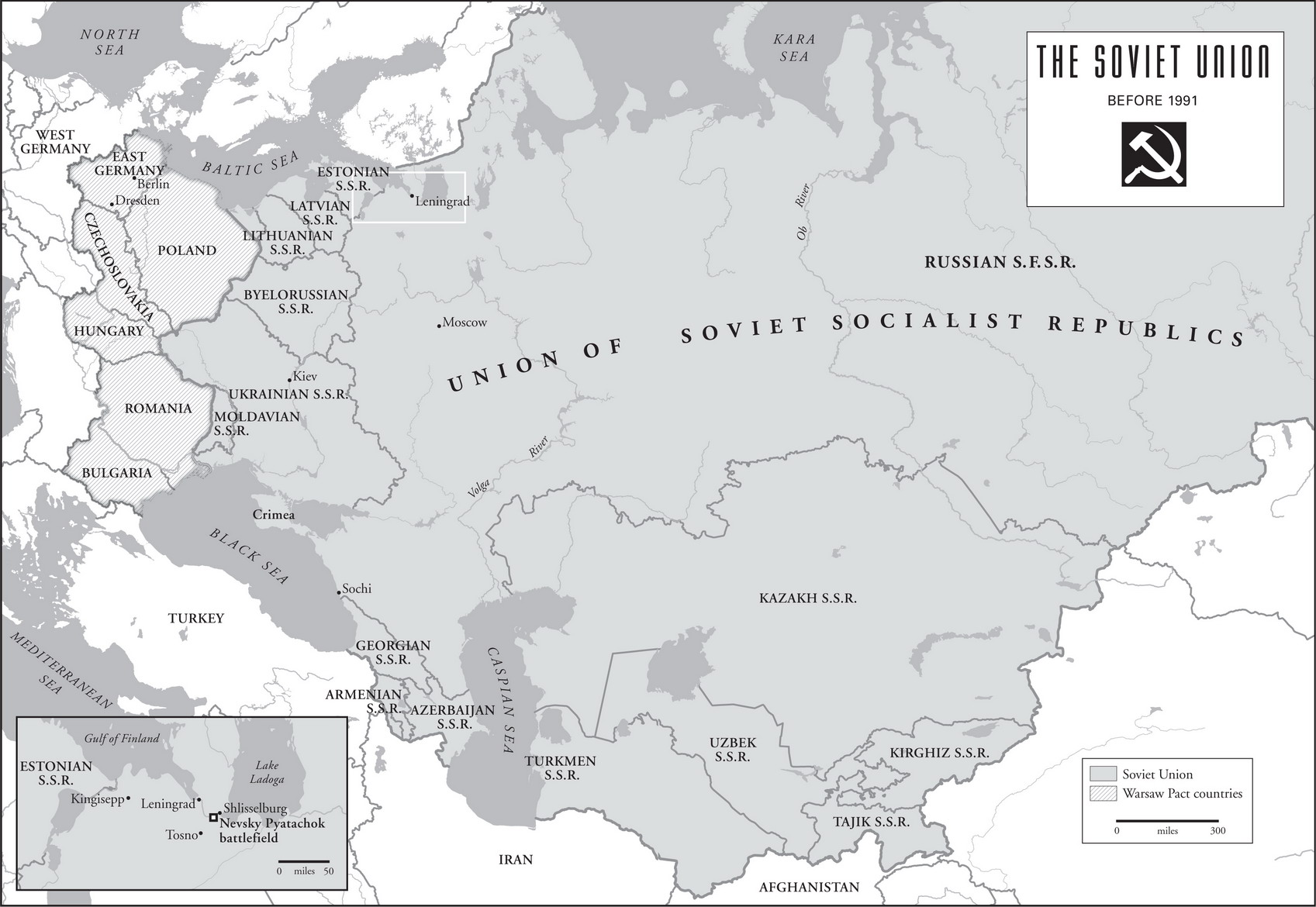

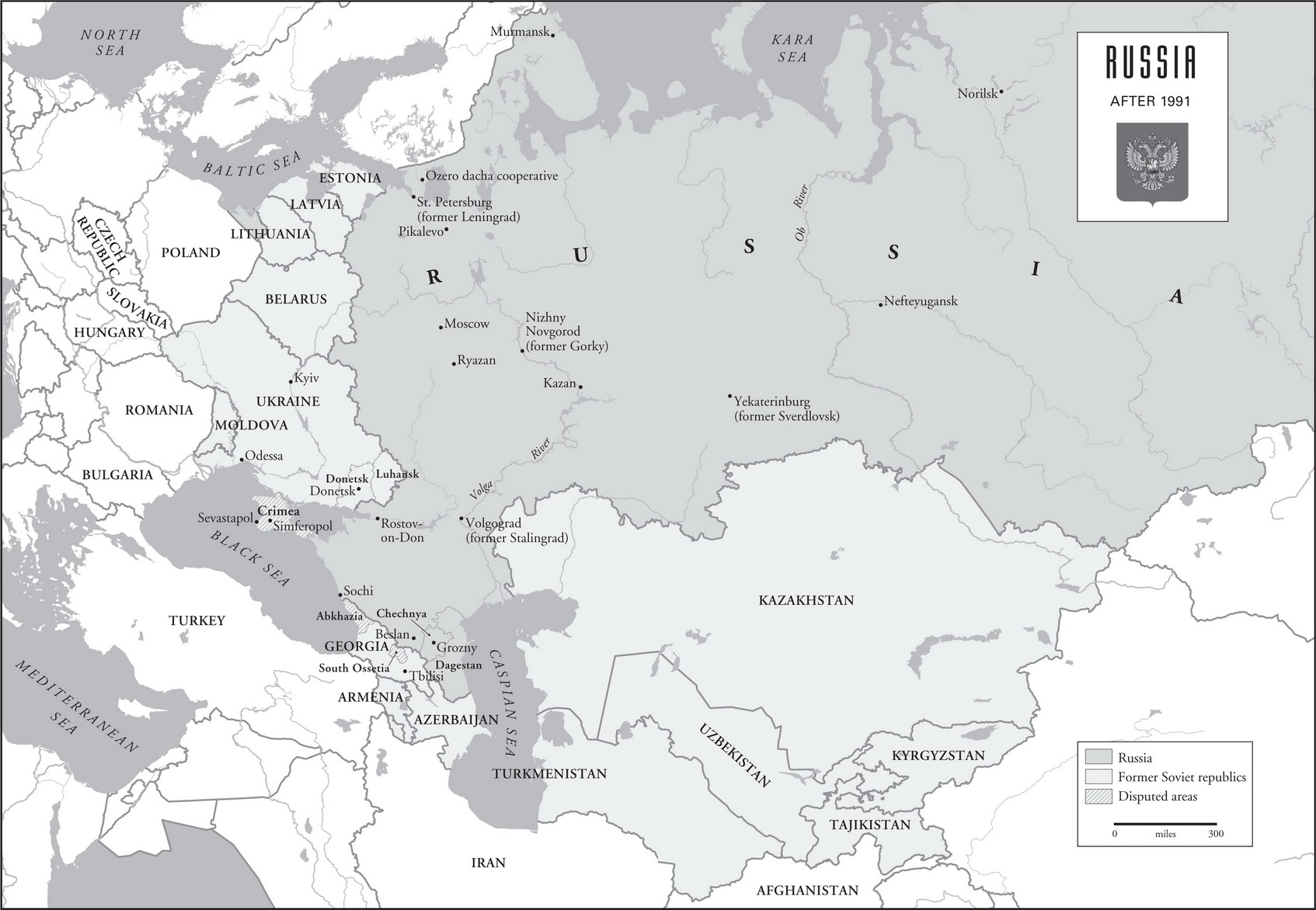

CHAPTER 1
Homo Sovieticus
V ladimir Spiridonovich Putin edged forward through the cratered battlefield beside the Neva River, roughly thirty miles from Leningrad. His orders seemed suicidal. He was to reconnoiter the German positions and, if possible, capture a tongue, slang for a soldier to interrogate. It was November 17, 1941,
Putin, then thirty years old, lay wounded on a bridgehead on the east bank of the Neva. The Red Armys commanders had poured troops across the river in hopes of breaking the encirclement of Leningrad that had begun two months earlier when the Germans captured Shlisselburg, an ancient fortress at the mouth of the Neva, but the effort failed. The Germans laid a siege that would last 872 days and kill a million civilians by bombardment, starvation, or disease. The Fhrer has decided to wipe the city of Petersburg from the face of the earth, a secret German order declared on September 29. Surrender would not be accepted. Air and artillery bombardment would be the instrument of the citys destruction, and hunger would be its accomplice, since feeding the population cannot and should not be solved by us. Never before had a modern city endured a siege like it.
Is this the end of your losses? Joseph Stalin furiously cabled the citys defenders the day after the siege began. Perhaps you have already decided to give up Leningrad? The telegram was signed by the entire Soviet leadership, including Vyacheslav Molotov, who in 1939 had signed the notorious nonaggression pact with his Nazi counterpart, Joachim von Ribbentrop, which was now betrayed. It was by no means the end of the losses. The fall of Shlisselburg coincided with ferocious air raids in Leningrad itself, including one that ignited the citys main food warehouse. The Soviet forces defending the city were in disarray, as they were everywhere in the Soviet Union. Operation Barbarossa, the Nazi invasion that began on June 22, 1941, had crushed Soviet defenses along a thousand-mile front, from the Baltic Sea to the Black Sea. Even Moscow seemed in danger of falling.
Stalin never considered surrendering Leningrad, and he dispatched the chief of the general staff, Georgy Zhukov, to shore up the citys defenses, which he did with great brutality. On the night of September 19, on Zhukovs orders, Soviet forces mounted the first assault 600 meters across the Neva to break the siege, but it was repulsed by overwhelming German firepower. In October, they tried again, hurling forth the 86th Division, which included Putins unit, the 330th Rifle Regiment. The bridgehead those troops managed to create on the eastern bank of the Neva became known, because of its size, as the Nevsky Pyatachok, from the word for a five-kopek coin or a small patch. At its greatest expanse the battlefield was barely a mile wide, less than half a mile deep. For the soldiers fated to fight there, it was a brutal, senseless death trap.



